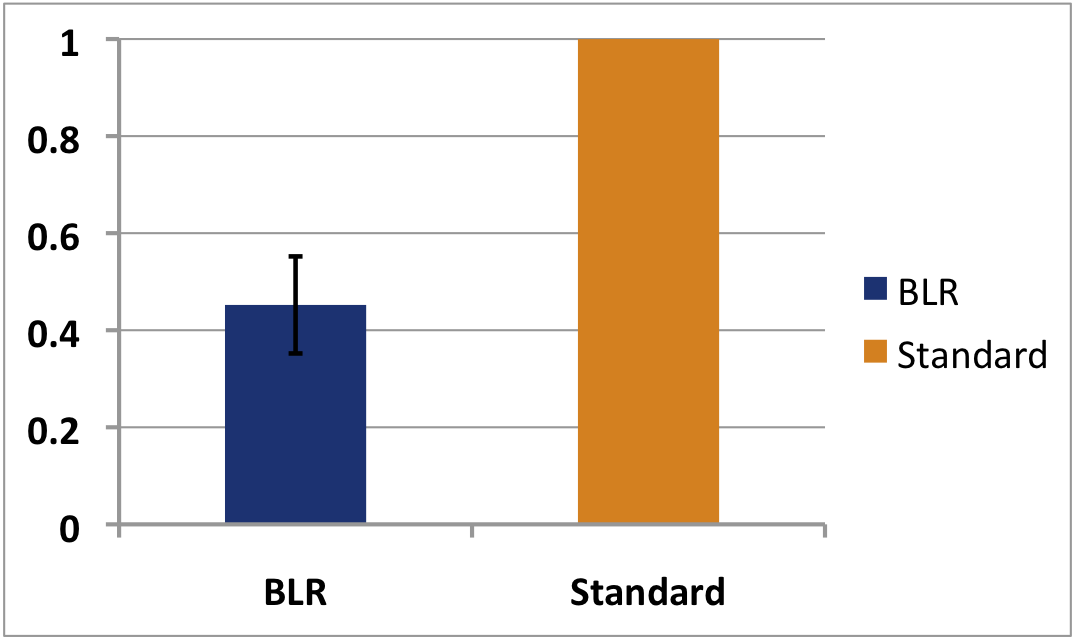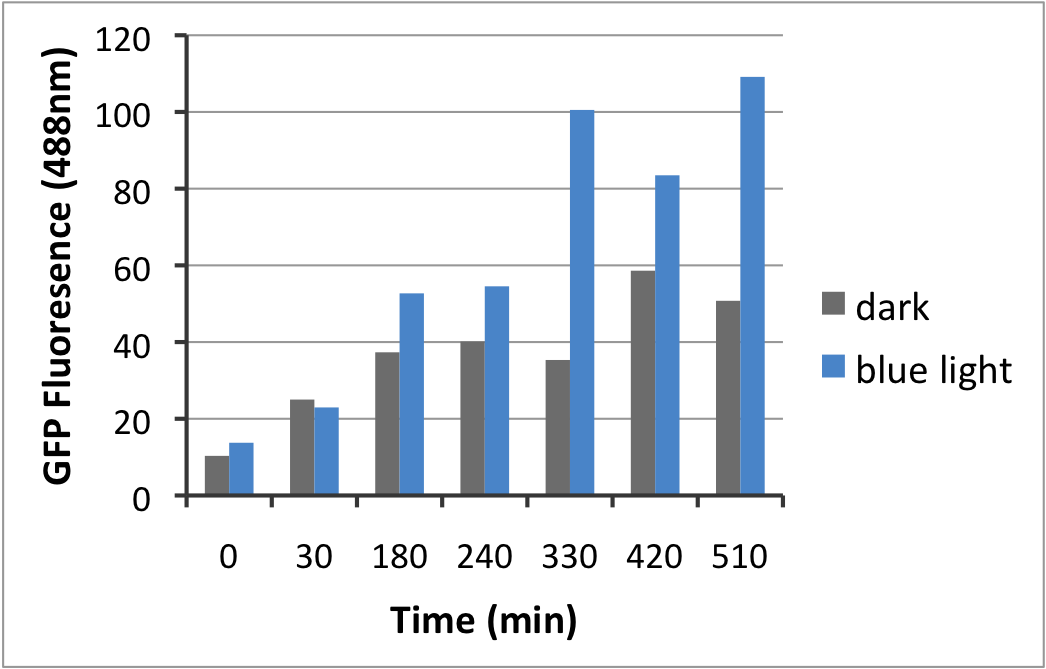Team:KULeuven/Project Results
From 2009.igem.org
Project Results
Our Results can be roughly divided in two sections, the biobrick assembly from starting parts in order to create our (test)-devices and secondly the characterizations of a part.
First and foremost the following biobricks were succesfully assembled and to the registry:
| Partnumber | Description |
|---|---|
| Antisense key | |
| Sam5 + rbs | |
| virA | |
| VirG | |
| VirB | |
| Blue light promoter | |
| Ech+fcs | |
| Blp + GFP | |
| Blp + RFP | |
| Ech + Fcs + terminator | |
| Promotor+ Ech + FCS + terminator | |
| Sam8 +Sam8 | |
| Sam8 + Sam5 + promoter | |
| Sam8+ Sam5 + promoter + comt | |
| Promotor + Sam8 + Sam5 + comt + terminator | |
| lock | |
| Sam8 + RBS | |
| Ech + rbs | |
| Fcs + rbs |
Experimental results
Furthermore, the blue light promotor was extensively characterized. The strength of the promoter was compared to the standard iGEM promoter, , using the protocol from the iGEM measurement kit.
Next, the effect of blue light on this promoter was examined. As shown on the graph below, blue light irradiation has a significant effect on the strength of the promoter. However, aside from light, temperature also has an important effect on promotor strenght (possibly even bigger then light). For instance, when using low copy plasmids, temperature will influence the promoter/repressor ratio. Cells grown at 37°C will have a too large effect on the promoter, resulting in constitutive activity. At 16°C, there will be more repressor and more receptor, however the low temperature will put the receptor in its active state causing it to inhibit the repressor from doing its job. When grown at 25°C the ratio between repressor and receptor is better, without light irradiance the receptor/represssor are in there ground state resulting in a good repression of the promoter.
Experimental set-up
Liquid cultures were ented (and re-ented in the evening) and grown on two different temperatures: 37° and 25°C. Note: enting of the cultures needs to be done in a dark room (red light)and it might be best to use medium that was put at 4°C overnight. From each of these growth conditions some of the cultures were put in 16° and the other at 25°C. Each of these groups were then again divided in a group that was exposed to blue light and a group that was not exposed to light. Measurements were done at following hours: 0h;0,5h;1,5h;3h;4,5h;6h;8h. The construct used for our test was a ligation of the blue light promotor in front of GFP using three different vectors (pSB3K3, pBR322 and pSB1A2). (An example of a sample name is: 37/16/NB/LigA, grown at 37°, put in 16°, not lit and in vector pSB1A2. )
 "
"









